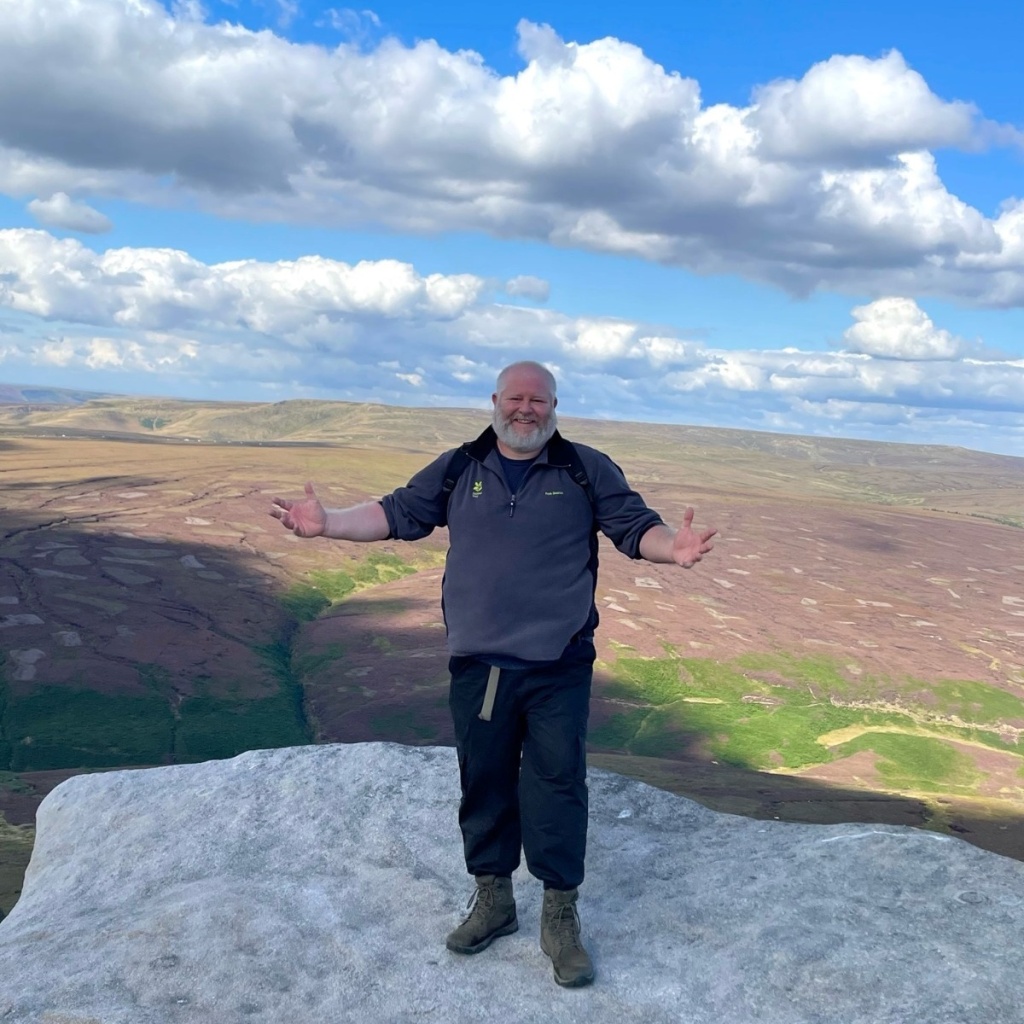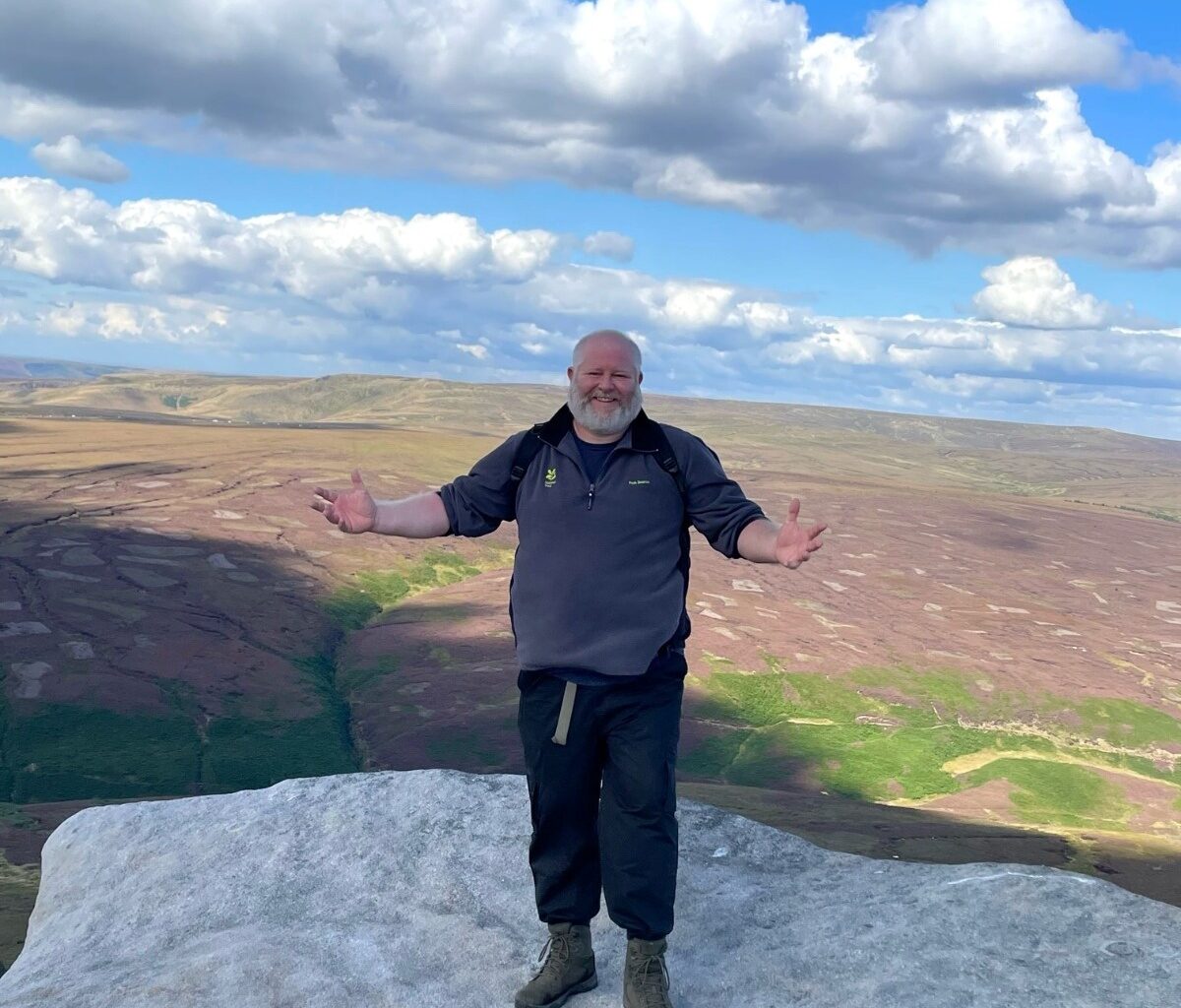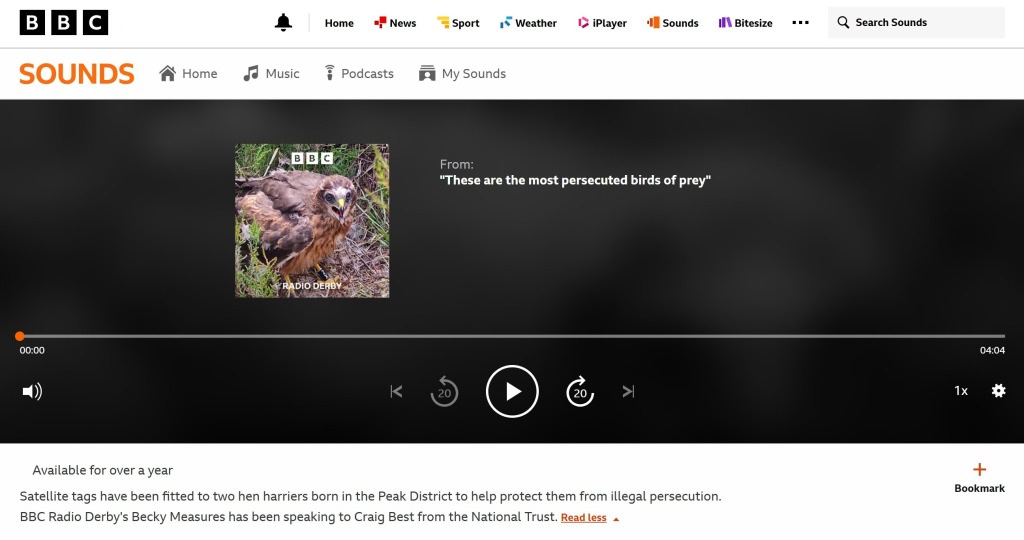Following yesterday’s news of a successful Hen Harrier breeding attempt this year on National Trust-owned moorland in the Peak District National Park (here), Craig Best, the NT’s General Manager in the High Peak, was interviewed on BBC Radio Derby about the significance of the successful nest and the importance of satellite-tagging the young birds (this year’s two Peak District tags have been paid for by the National Trust and the Peak District National Park).
 Craig Best, National Trust General Manager, High Peak (photo supplied)
Craig Best, National Trust General Manager, High Peak (photo supplied)
Craig is well known as an experienced, committed and passionate advocate for restoring the uplands and is the driving force behind significant & welcome changes in how the NT’s moorlands are managed in the High Peak (e.g. see here, here, here and here for earlier blogs).
He’s also not someone who pretends that illegal raptor persecution isn’t an ongoing issue and for that alone, he deserves much kudos.
The interview on BBC Radio Derby with host Becky Measures is just four minutes long and appears to be a cut from a wider conversation, but Craig gets his point across about Hen Harrier persecution. It can be heard here and is available on BBC Sounds for a year.
Here’s the transcript:
Craig Best: It’s brilliant that we’re seeing Hen Harriers nest on our land, on National Trust land in the High Peak, so yeah, you’re right, these birds suffer persecution, in fact they’re the most persecuted bird of prey in the UK.
Becky Measures: Why?
Craig Best: Well, all these birds nest on open moorland in really remote places, and what we’re finding is the vast majority of persecution happens on or near to land managed for grouse shooting. Hen Harriers obviously have to eat, so they’ll eat small mammals such as voles and shrews, but they’ll also take chicks of birds, and I’m sure they will take grouse chicks as well, so unfortunately these birds suffer high levels of persecution across the UK and they’re quite often shot.
Becky Measures: So how does tagging, then, protect them?
Craig Best: Yeah, so interestingly, we tag these birds, which is brilliant because it gives us data on where they fly, and some of these birds fly across the UK, we’ve even had some of the Hen Harriers that we’ve tagged in the past fly to places like France, so they cover huge distances, that gives us lots of information, it gives us information where they roost, where they might be feeding, but importantly, these tags are very expensive, they’re about a thousand quid each, but importantly they track the birds and when the bird ‘mysteriously disappears’ we’ve got some idea where that happens.
Beck Measures: Right, ok, so you’re able to kind of keep an eye on them and know what their movements are. It must be difficult to get the tags on them, though?
Craig Best: Yeah, so the tags are, I mean the people who do it are licenced by Natural England and we’re working really closely with our colleagues at the RSPB, but also there’s a volunteer group in the Peak District called the Peak District Raptor Group and all these individuals are experts, and when the birds are young on the nest, not able to fly, we approach them and carefully apply the tag.
But the tag provides much needed protection, so they’re less likely to be shot because if that tag stops working, or we find it, you know we don’t get the tag movements, clearly that could link to a persecution incident. Not always, sometimes these birds, like many other animals do, die naturally, but quite often what we’re finding across the UK and in the Peak District and places like North Yorkshire, these birds are persecuted and are shot in these remote areas and it’s very much linked to grouse shooting.
We invest millions in the upland landscape in the High Peak to restore our peatlands, restore the peat, you know, this landscape is fantastic for our drinking water, a lot of rain falls on our drinking water so whether you live in Sheffield or Manchester, that’s where it comes from, and we restore the landscape by establishing trees, because these places are just fantastic for nature and provide lots of services, such as flood risk reductions for people’s homes and businesses, but of course we invest this money and these pinnacle species such as Hen Harriers should be in much greater numbers. I think there’s something in order of 30-40 breeding pairs across the UK* so they’re really at risk of extinction if this persecution continues, but because we invest so much money, it’d be such a shame to not have these spectacular birds flying around and you know, like you referenced earlier on, your listeners and many people will have watched Springwatch and we saw a pair of Hen Harriers feeding and flying around and they’re just beautiful to look at and of course they have the right to exist like many other animals in the Peak District.
ENDS
*Craig was referring to England, not the UK. In 2024 there was a total of 34 Hen Harrier breeding attempts in England, of which 25 were successful, which is lower than the last two years, according to Natural England.


